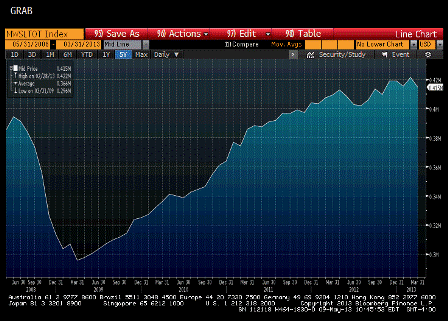Though a bit old, this March release is yet another indicator that shows signs of rolling over.
With the tax hikes and spending cuts, it’s up to private sector credit expansion to rise to the occasion. Should the lost income and lost jobs cause it instead to roll over, we’re looking at negative GDP.
How well do stocks forecast this risk?
Note, for example, the last time private sector credit expansion went into reverse, the S&P rallied to an interim peak of over 1,400 mid May of 2008, in front of a 50%+ sell off.
Not at all that it will happen again, but that markets aren’t all that good at forecasting private sector credit acceleration going into reverse.

Full size image
